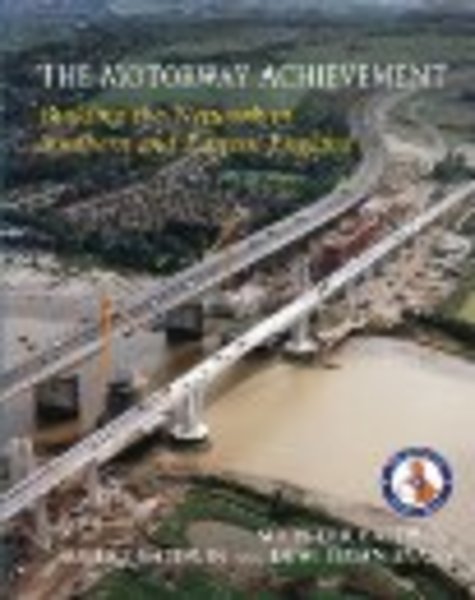The busy motorway network of Southern and Eastern England has, over 40 years, overlaid a vast and mostly earlier road system, adopting directly from that system only the Maidenhead and Runnymede bridges and a significant constructional experiment near Stilton in 1957-8 which now underlies the A1(M). The area’s motorways now total 657 miles – nearly one third of the UK’s motorway system but by length only 0.013 per cent of all UK roads. To thread motorways around London and through the diverse economic geography and geology of those populous car-owning regions to seaports and airports, required civil engineers to overcome many planning and structural problems and the post-war shortages, particularly of steel and finance. Their work facilitated far heavier freight and passenger flows, and easier distribution for the building aggregates needed in roads, new factories and offices, New Towns and the rebuilding of London. Meanwhile, inter-urban commuting from points beyond London’s Green Belt was largely facilitated by matching investments in electrified railways – many running parallel with motorways.The book also includes the visionary ideas for motorways advanced by Lord Montagu of Beaulieu from 1906 to 1928 and the later successes of Sir Frederick Cook and Lord Watkinson of Woking in persuading H.M. Government to secure appropriate legislation and build the region’s motorways from 1958 onwards. It looks at changes in traffic control systems and envisages the extra links and motorway widening works needed to serve international trade and meet the challenges of congestion, pollution and using different fuels. This beautifully produced volume is the second in Phillimore’s Building the Network series and is sure to be highly acclaimed by transport historians.
Motorway Achievement, The : Building the Network in Southern and Eastern England
$15.00
Sold Out
Additional Information
| Author | Baldwin, Peter et al |
|---|---|
| Number of pages | 310 |
| Publisher | Motorway Archive Trust |
| Year Published | 2007 |
| Binding Type | Hardcover |
|---|
